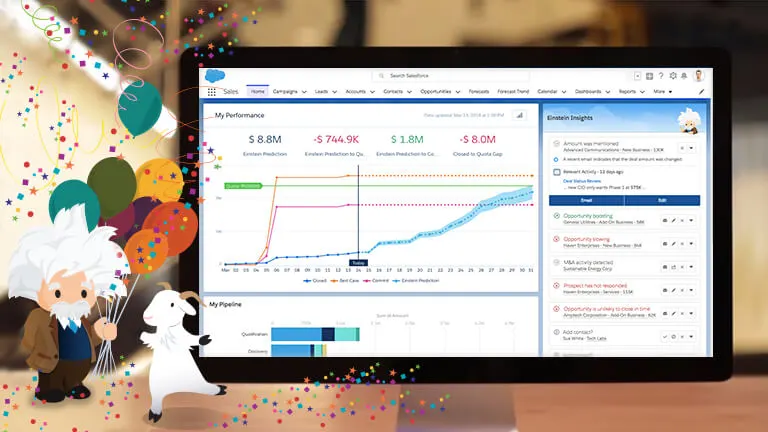By Shannan Hearne, Summit Technologies Marketing Specialist
Salesforce Sales Cloud is a powerful extension of your organization’s business growth. An investment in Salesforce is a big step in growing your enterprise. Implementing Sales Cloud Einstein puts your Sales Cloud instance and your sales and marketing teams into overdrive. Planning the implementation sets you up for success with Sales Cloud Einstein.

In the pre-enablement stage you need to fully understand your business challenges and priorities. Armed with that knowledge you can easily determine which Sales Cloud Einstein features you want to start utilizing in your organization. Ensure everyone is aligned with the goals you have for Sales Cloud Einstein so you can measure success along the way.
Some of the challenges you might identify within the organization could exist around too much data, too little time, processes that are too vague, and opportunities that are too difficult to recognize as at risk.
Best practice is to start with a small, varied group of users to test the features of Sales Cloud Einstein you want to incorporate.
Utilize Salesforce or your implementation partner’s tools to ensure that your CRM data is plentiful, useful and clean.
You are ready to roll into the enablement stage. Set up Sales Cloud Einstein in your sandbox org and turn on the features you wish to use. Be sure you are testing Sales Cloud Einstein with your existing architecture, workflows, and Lightning components.
Communicate with your users what they should achieve with Sales Cloud Einstein and train them on the features. Set SMART (specific, measurable, achievable, relevant, time-bound) goals so you can measure the success of your implementation. Some key performance indicators you might measure against could include lead conversion rate increases, closed won rate increases, opportunity pipeline increases, or time to close opportunity decreases.
Assign your Sales Cloud Einstein licenses to the users and and you are ready to go live in your Salesforce org. Initial Sales Cloud Einstein users should include a mix of power users, a pilot group, and users from multiple departments.
Feedback from your users, measurement of the ROI, and user group expansion will complete a successful implementation and the post-enablement stage.
Key stages to a successful Sales Cloud Einstein implementation should include the following:
A kickoff meeting to invite key stakeholders to have an overview of the goals and plans for Sales Cloud Einstein.
A training session explaining what each feature is used for and how it works in your Salesforce org. You can provide materials that users can refer to later, focus on user roles and goals, and share a custom Trailhead mix to get everyone off on a solid footing.

A Chatter or Slack group for early users can be a great place for questions and answers and for user feedback.
Schedule regular meetings with a small group of initial users. Open discussion with users will provide more detailed and useful feedback than written conversations.
Finally, before enabling the Sales Cloud Einstein features for your users create dashboards and reports that will help you measure the success of the implementation, user engagement, and measurement for your SMART goals.
If you aren’t working with an implementation partner, Salesforce’s setup guide will walk you through the above steps.
